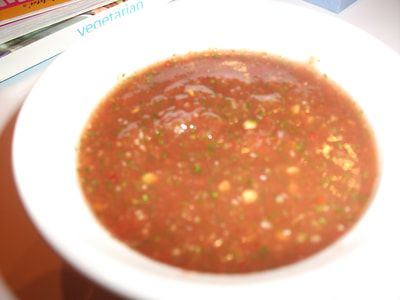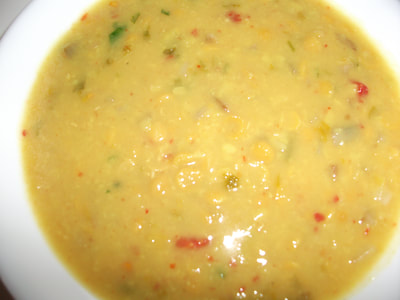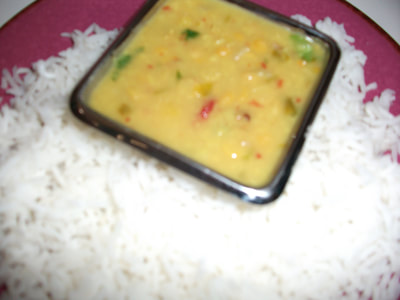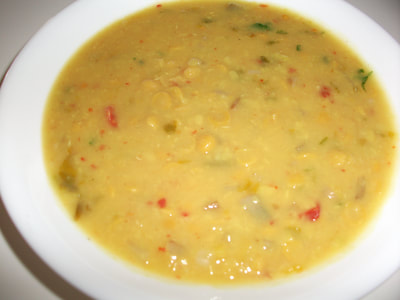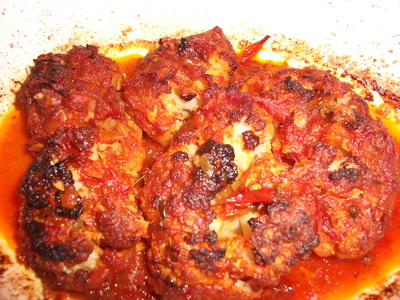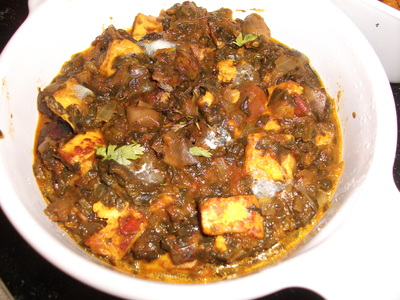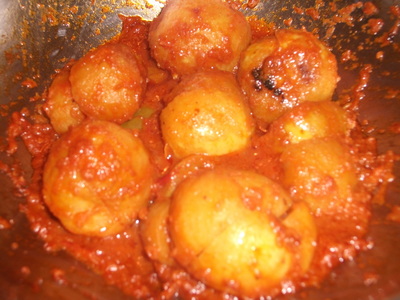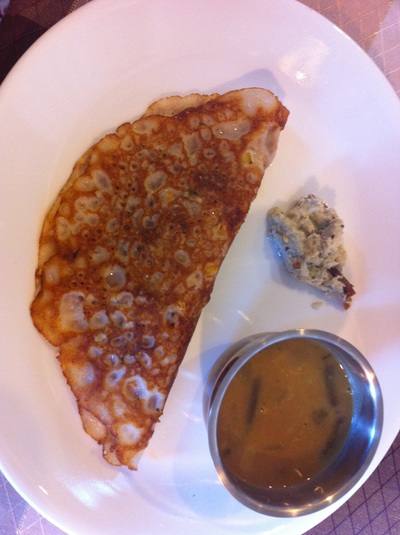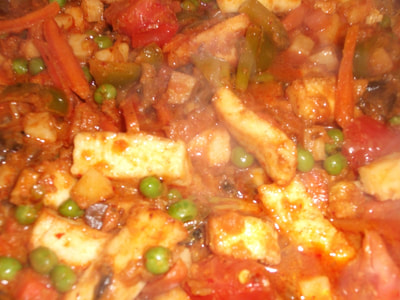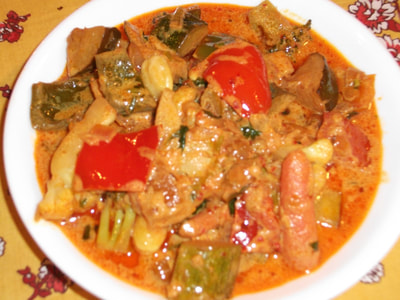LINGERING TASTES of PUNJABI Dishes: - Traditional Forgotten Dishes
Vegetarian food is recommended by the Dietitians for Healthy Body.
Here the Day to day meals, Easy to make healthy and delicious are given. Such as Daily Breakfast dishes, Simple attractive afternoon snacks.
In your Holiday meals, include- Breakfast- Brunch, Heavy Tea and no Dinner, if heavy dinner, avoid Lunch and heavy Tea.
Select the recipes for the menu from the below list, According to your need.
Indian Dals- lentils:
Simple easy to cook lentils for the Zee generation who want to learn cooking.
1. Moong Lentil: A Light lentil which can be given to patients too. 2. Channa & Urad Dal
Moong Dal:
Ingredients;
½ C Moog dal, picked, and washed in 5 waters
1 tsp level, Salt; ¼ or ½tsp Turmeric; ½tsp red Chili Flakes; 1 tsp chopped Ginger; 3-4 C Water
For garnish:
1 tbsp. chopped fresh coriander leaves; ¼tsp garam masala
For Tarka:
1 tbsp ghee; 1 tbsp chopped onion; 1 small green chili, chopped
Method:
Put the dal in a deep pan with water. Add salt, haldi, red chili flakes and ginger chopped.
Put the pan on medium heat, uncovered until it comes to a boil. When the froth subsides, reduce heat, and cook covered for 15-20 minutes or until the dal is cooked and acquires a consistency of porridge thickness.
Take it from heat, pour it in the serving dish, add 1 tbsp. chopped fresh coriander leaves and mix.
For tarka heat ghee in a saucepan add onion and green chili. Fry until the onion is light brown. Pour this on the cooked dal garnish with a few chopped coriander leaves and if desired mix some diced tomato pieces.
Serve hot with Rice or Roti- Indian Bread
Channa Urad Mixture Dal Serves-4
Ingredients:
½C level Channa Dal; ¾C Urad Dal; 1 tsp full salt; 1 tsp Turmeric; ½tsp Red Chili Flakes; 1 tbsp chopped Tomatoes
For Tarka:
¼C chopped Onion; ½ green chili chopped; 1 tsp chopped Ginger; 2 tbsp Ghee;
For Garnish:
1tbsp chopped Coriander leaves
Method:
1. Pick and mix the dals. Wash the dal mixture with 4-5 times in cold water, until clear water formed.
2. Put the dals in a pot with 1-1 ½ liters water. Add salt, pepper and haldi in it.
3. Cook on medium heat until it comes to a boil, lower the heat and let the dal simmer for ½ hour or until the dal is cooked to a creamy texture.
4. Add the tomatoes and continue to cook on low heat for 2 more minutes. Take the pot from heat and keep aside, or pour the cooked dal in the serving dish.
5. Now make the Tarka. Heat ghee in a pan add onion, ginger and green chili. Stir fry for 2 minutes or until the onions are brown.
6. Pour the tarka over the dal in the serving dish. Garnish with coriander leaves.
Serve hot with Indian bread or Rice.
Most favorable North Indian dishes of winter season:
'Sarsoo Ka Sag and Makki ke Roti.'
Punjabi Sarsoo Ka Saag- (Punjabi Mustard Greens): Cooking time approx: 2 hours
Ingredients:
1kg/2lb Sarsoo Saag- mustard greens (The leavesand shoots should be tender), strip off the hard covering from the stems takeonly soft stalks.
250gm Spinach greens
200-250gm Barthu leaves discarding the stems,or green Broccoli florets
4-5 green chilies, chopped; 1 ½” ginger piece; 3-4 garlic cloves
200gm Makai ka Atta (yellow Corn Flour), if thecorn flour is not available substitute Gram flour (Basen)
For the Tarka:
½ onion, finely chopped
¼C beaten Curds
2 garlic cloves, crushed
1” piece garlic
½tsp Cumin seeds
2 green chilies, finely chopped (optional)
2tbsp refined butter (Ghee)
Method:
1. Wash and thoroughly clean the greens and finely chop each separately, and then mix.
2. In a large heavy bottom Pan or Cooker add the cut greens, chopped green chilies, chopped ginger and garlic in it. Put ½Cwater in the vessel/cooker, cover and cook on medium high heat for 30 minutes or check the cooker on 2 whistles. The saag should be cooked thoroughly to a soft texture and the color too should change a little.
3. Take out the cooked greens from the cooker, squeeze out the liquid from them. Keep the liquid aside till required. Blend the squeezed greens in a blender to form a smooth paste.
4. Season it with salt and red chili flakes, mix. Add the corn flour, 1tbsp at a time, blending with the greens with each addition until the whole flour is consumed. Now add the reserved liquid to the Saag Paste and mix well. The saag should be a little liquidly, if you think it is not so add ¼C hot water and mix.
5. Put the saag paste in the heavy bottom pan and cook on medium low heat for about 45-50 minutes, stirring occasionally. Add ½C hot water to the saag after 20 minutes if required. Continue to stir at intervals, so that the saag is not dry and does not stick to the bottom of the cooking pan, without liquid it will burn at the bottom and give out burning smell. Cook until the rawness of the saag has gone and the taste of the flour isnot left on the tongue. It will take another 15-20 minutes to get the saag cooked completely. The final texture of the saag should be smooth and moist, most of the liquid should be used in cooking.
6. In the meantime prepare the tarka.
In a small pan heat ghee and when hot add cumin seeds. As soon as they flutter add the chopped onion, garlic, ginger and the green chilies. 6. Cook until the onion is soft and turn light brown. Add chopped tomatoes, cook for 5 minutes, until the tomatoes are blended with the masala. Stir in tomato sauce, stir cook for 1 minute.
8. Add beaten curds 1tbsp at a time while cooking, until curds are completely blended with the tarka.
9. Pour the tarka on the cooked saag. Mix and cook for 10 minutes on low heat. If desired add 2tbsp butter and cook for 1minute.
10. Serve, hot Decorating with a lob of butter (optional)with Makai ke Roti
2. Makai Ke Roti (Corn flour Indian Bread) Serves2 of 2 roti each.
Makai Ke Roti
Ingredients:
2C Makai Ka Atta (Yellow Corn flour)
1tbsp butter milk
1tsp butter
Hot water to knead flour
Method:
1. Put the flour in a large plat or in a kneading bowl. Mix butter milk in the flour. With hot water knead the flour to soft dough. Knead it well for at least 5 minutes. Cover the dough with a muslin cloth and keep aside with 10 minutes.
2. Make 2 small walnut size balls. Put a little butter between the balls press them with wet palms, to form a sandwich. With warm wet hands, roll the roti of the desire size (6 ½“- diameter round). If, it is difficult to roll with palms try to make it by putting the flour sandwich, on a wet cloth on a rolling board and with the right hand press the flat ball into around of the desired size. Make the rest of the rotis in the same way.
3. Heat the griddle (Tawa) and put the roti on it. When one side is cooked with brown specks on it, turn it and cook the other side till the brown specks appear.
4. Put a little ghee on the both sides of the roti and lightly fry it.
5. Serve it hot with Sarsoo ka Saag. Put a small piece of butter on the roti if desired.
Introduction
In North Indian Rasoi the dishes are made from fresh vegetables, different types of lentils and rice. Different combination of the ingredients gives different look, taste and nutrition to a dish.
All this is achieved with the seasoning, herbs and the presentation of the meal.
You can have numerous different recipes in your repertoire to suit your taste.
Healthy- Cooking to give fine flavor to vegetables.
In our country we find ‘a marvelous variety of vegetables with their unsurpassed flavors’ which are difficult to find anywhere else. Yet this flavor is so often lost in cooking.
Aim always, to keep the flavor and goodness, in your vegetables by cooking them in their own juices, with as little water as possible.
Vegetables that are usually boiled can be steamed, braised or baked in a casserole.
Dried vegetables Raj-maha (kidney beans), peas, black eyed beans and other hardy legumes must be soaked over-night, before cooking.
Follow my recipes and recollect our Grandma's Delicious mouth- watering forgotten dishes. In an Indian meal there is a dry vegetable, a liquid or semi liquid dal or curried dish with raita and green salad.
Select and prepare your food wisely and keep yourself and your family fit.
In Festival dishes of Punjab mathris have their special place.
In every function mathris are served. There can be namkeen (saltish), sweet or plain. Again in namkin mathri you can have saag mathri, Methi mathri, achari mathri and so on.
Sakerparas, Sweet Sev- Sereini, Barfi, Besan ke Ladoo, Bundi ke Ladoo etc., different types of Pinnis of Atta, and lentils.
Saltish delicacies: such as Namkeen Mathri, Besan ke Pakora, kachori, Plain Mathri etc. These are traditional dishes prepared in the 'Punjabi Marriage Cerebrations,' as well for the festivals.
Here are given the recipes of plain mathri and namkin mathri with different favorite achars.
Attempt has been made to familiarize the traditional unforgettable dishes to the present modern generation. So that the rich tradition of healthy ‘lajawab’ (exotic) dishes revives and you can take the advantage of the vast variety of recipes to make the unattractive and unpalatable vegetables, fruits and herbs attractive and irresistible.
Numerous dishes are made from fresh vegetables, different types of lentils and from Grains.
Different combination of the ingredients gives different look and taste to the dish.
All this depends on the seasonings, herbs and the representation of the meal.
In Breakfast we had a handful of assorted nuts with the milk.
Milk was the difficult part but we enjoyed the nuts in winter, specially the Almonds, Chilgozas (Pine nuts), Pistachios, Walnuts and Raisins.
Corn with Gur was also a popular snack for the afternoons, in Winter Season.
With Peanuts and Cashews we became familiar after India Pakistan Partition. As both these are mostly products of South India.
In Lunch there were two vegetables – one dry and the other with curry- with Raita and simple Salad such as (mixed diced vegetable like onion, cucumber, tomato, with lemon dressing
During winter, lunch ended with Carrot Halwa (gajrala) , Hot Kheer or warm pinni for dessert.
During, hot Season, we used to have in Lunch cold lassi, nimbo Pani, Aam Ras etc.
also there was a mango and cantaloupe slices.
In cold desserts we had Phrini, Rasgullas, Rasmali, homemade mango ice cream and kulfi.
At Tea time we had snacks –Appetizers and some sweet. Sometimes Samosas, Pakoras – Paneer pakoras, assorted pakors, the most relishing Chat with Gol Gappas, bonda etc.
Day ended with Dinner. Dinner contained one dry vegetable and any Lentil (Moong dal, channa dal urad dal mix, or Saboot moong dal - except Dal Makhani which was served for lunch on Holidays.
Generally sliced onions, was the salad at night.
All family members were supposed to eat whatever the menu was prepared
The most important thing was that water was served before the food was served. So, it was a routine to take water with the meals. The above routine for daily meals, during my childhood gave me dividends later on as I grew old. At the age of 85, I am as active as one could be at 60 or 65, with black hair.
Secret of modifying any of the dishes with less oil to your requirement, when reducing the oil to half, substitute the other half with water or hot black tea and curd.
The healthiest kitchen is a low fat kitchen. Hints - How to use less oil: 50% of the oil needed by our bodies comes from 'invisible oils' present naturally in produce such as cereals, dals and vegetables, only one tablespoon or so extra is needed per person, per day by the cooking oil
For instance, when you fry onions, heat as little oil as needed, add onions and brown them. Cook on a slow fire adding a spoonful of water till the onions are mushy. Then add the masala and fry.
As the masala dries add a little water until it is well browned. Or fry onions in the usual amount of oil then drain the excess oil, leaving one teaspoon for frying the masala and follow the same method.
Correct way to fry: 1. Oil should be smoking hot. Reduce the heat after putting the food.
2. Do not allow oil temperature to go down by adding too many pieces of at the same time.
3. After frying, drain well with a slotted spoon. Extra oil can be sponged off by placing fried food on kitchen paper towel. After each batch of frying, reheat oil.
Study your body, fight back your weaknesses and illness with well balanced, well- cooked delicious food, and get the Nature’s blessings from its fresh produce, spices and herbs.
Some important facts about the food you eat.
Start with a common herb Cilantro- which is an annual plant of the parsley family. This little plant has numerous benefits.
i) It settles hot tummy – Ayurveda herbalists say cilantro ‘cools’ a hot stomach, banishes intestinal gas and generally aids digestion.
ii) It provides a cooling contrast to hot flavors- like chilies and ginger.
iii) Cilantro contains large amount of nutrients, too, including carotene, calcium, protein and minerals.
iv). It gives its best flavor when added towards the end of cooking time or used for garnishing, as heat diminishes its character somewhat.
Cilantro with its citrus somewhat piney green taste goes with more food than you’d think. Salads, vegetables, marinades, sauces, grains, soups and potatoes all benefit from adding cilantro.
The root used in Thai cooking is finely grated and added to foods
In Indian cooking most of the dishes are garnished with chopped cilantro leaves- cilantro green chutney is also used on savory dishes, chats and sandwiches.
Coriander seeds taste lemonier and less piney.
Grind into curries or sprinkle onto root vegetables, coriander lends a slightly spicy taste.
Besides cumin and coriander, turmeric is also a very important ingredient in Indian curries.
Turmeric is the essential spice which give the eye catching color to North Indian dishes. It is known for its medicinal properties and is used in aryurvedic medicines as well as in home remedies for a number of ailments
Cumin seeds and coriander seeds are very important in Indian curries and spices, the taste of which reflects in the delicious dishes.
You will enjoy the healthy Pilaf. Cumin, Chili, Rice cooked in Vegetable Broth.
For real spices certain points should be noted:
1. If spices are faded or caked together, they should be discarded and new ones should be purchased.
2. Smell the herb or spices. If the smell has lost, the herb or spices should be discarded, replaced by fresh ones.
3. Any change in taste or no distinctive taste in the spice, replace it.
Introduce a variety of texture, color and taste by balancing the dishes, using little oil, or no oil. %
4. Paneer Kofta: Makes 18 Koftas.
Ingredients: 9oz Paneer (3lb milk gives 6oz paneer) 1½oz semolina (sugi)
½tsp each salt, red chili pepper and garam masala
For Filling: ¾ oz ghee, 1½oz finely chopped onion, 1½oz paneer, ¾oz finely chopped ginger, 3 finely cut green chilies, ½tsp salt, ¼tsp each red chili pepper and garam masala, 15 finely shredded silvered Almonds, 15 finely shredded Pistachios,1tbsp chopped coriander leaves
For Gravy: 5oz/ ½C finely grated onion, 4oz ghee, 1 ½tsp salt, 1” piece ginger, ¾tsp red chili pepper, 12 small garlic cloves, 1 ½tsp poppy seeds, soaked and grinded 9 Almonds, 1 ½dessert spoon coriander seeds, 1tsp white zeera, 1tbsp desiccated coconut ½tsp sugar, 6oz tomatoes, 3 finely chopped green chilies, 18oz whey 1tbsp finely chopped coriander leaves, ¾tsp garam masala.
Method:
1. Prepare the paneer and drain out the liquid.
2. For the filling take 1 ½oz paneer, crumble and proceed as follows:
Heat ghee, add onion fry lightly, then add crumbled paneer, salt red chili powder, garam masala, almonds, pistachios, ginger, green chilies and coriander leaves
Stir a little, remove from heat. Cool a little and divide into 18 parts.
3. In the meantime knead the remaining paneer with the heel of the palm or pass through a sieve. Knead until the grains disappear and smooth dough is formed.
4. Add semolina, salt, red pepper and garam masala. Knead again and mix thoroughly. Divide this dough in 18 equal parts, also.
5. Flatten each part of the paneer dough and put 1 part of the filling in each one of them. Close the edges to cover the filling and form balls.
6. Fry these balls in ghee on medium heat until golden brown. Remove from ghee, drain and keep aside.
7. Heat ghee for the gravy. Add onion fry to golden brown. Add red chilies, ginger ground, garlic, almonds, coconut, coriander seeds coarsely crushed, cumin seeds, and other ingredients. Cook for 3-4 minutes, lastly stir in tomatoes and seasoning.
8. Continue stirring and adding a little whey at a time until garlic is cooked and the ghee separates.
9. Lower heat and add the rest of the 18oz whey and let simmer till 2/3 of the sauce is left. Add paneer balls just before serving or place the warm koftas in a serving plate and pour hot sauce over them at the time of serving. The Paneer koftas are very soft they will become mushy if boiled with the curry, they need careful handling to maintain shape.
Transfer in the serving dish. Garnish with coriander leaves and sprinkle garam masala. Serve immediately.
Note: These cheese balls can be served dry as Paneer kababs at tea-time.
Vegetarian food is recommended by the Dietitians for Healthy Body.
Here the Day to day meals, Easy to make healthy and delicious are given. Such as Daily Breakfast dishes, Simple attractive afternoon snacks.
In your Holiday meals, include- Breakfast- Brunch, Heavy Tea and no Dinner, if heavy dinner, avoid Lunch and heavy Tea.
Select the recipes for the menu from the below list, According to your need.
Indian Dals- lentils:
Simple easy to cook lentils for the Zee generation who want to learn cooking.
1. Moong Lentil: A Light lentil which can be given to patients too. 2. Channa & Urad Dal
Moong Dal:
Ingredients;
½ C Moog dal, picked, and washed in 5 waters
1 tsp level, Salt; ¼ or ½tsp Turmeric; ½tsp red Chili Flakes; 1 tsp chopped Ginger; 3-4 C Water
For garnish:
1 tbsp. chopped fresh coriander leaves; ¼tsp garam masala
For Tarka:
1 tbsp ghee; 1 tbsp chopped onion; 1 small green chili, chopped
Method:
Put the dal in a deep pan with water. Add salt, haldi, red chili flakes and ginger chopped.
Put the pan on medium heat, uncovered until it comes to a boil. When the froth subsides, reduce heat, and cook covered for 15-20 minutes or until the dal is cooked and acquires a consistency of porridge thickness.
Take it from heat, pour it in the serving dish, add 1 tbsp. chopped fresh coriander leaves and mix.
For tarka heat ghee in a saucepan add onion and green chili. Fry until the onion is light brown. Pour this on the cooked dal garnish with a few chopped coriander leaves and if desired mix some diced tomato pieces.
Serve hot with Rice or Roti- Indian Bread
Channa Urad Mixture Dal Serves-4
Ingredients:
½C level Channa Dal; ¾C Urad Dal; 1 tsp full salt; 1 tsp Turmeric; ½tsp Red Chili Flakes; 1 tbsp chopped Tomatoes
For Tarka:
¼C chopped Onion; ½ green chili chopped; 1 tsp chopped Ginger; 2 tbsp Ghee;
For Garnish:
1tbsp chopped Coriander leaves
Method:
1. Pick and mix the dals. Wash the dal mixture with 4-5 times in cold water, until clear water formed.
2. Put the dals in a pot with 1-1 ½ liters water. Add salt, pepper and haldi in it.
3. Cook on medium heat until it comes to a boil, lower the heat and let the dal simmer for ½ hour or until the dal is cooked to a creamy texture.
4. Add the tomatoes and continue to cook on low heat for 2 more minutes. Take the pot from heat and keep aside, or pour the cooked dal in the serving dish.
5. Now make the Tarka. Heat ghee in a pan add onion, ginger and green chili. Stir fry for 2 minutes or until the onions are brown.
6. Pour the tarka over the dal in the serving dish. Garnish with coriander leaves.
Serve hot with Indian bread or Rice.
Most favorable North Indian dishes of winter season:
'Sarsoo Ka Sag and Makki ke Roti.'
Punjabi Sarsoo Ka Saag- (Punjabi Mustard Greens): Cooking time approx: 2 hours
Ingredients:
1kg/2lb Sarsoo Saag- mustard greens (The leavesand shoots should be tender), strip off the hard covering from the stems takeonly soft stalks.
250gm Spinach greens
200-250gm Barthu leaves discarding the stems,or green Broccoli florets
4-5 green chilies, chopped; 1 ½” ginger piece; 3-4 garlic cloves
200gm Makai ka Atta (yellow Corn Flour), if thecorn flour is not available substitute Gram flour (Basen)
For the Tarka:
½ onion, finely chopped
¼C beaten Curds
2 garlic cloves, crushed
1” piece garlic
½tsp Cumin seeds
2 green chilies, finely chopped (optional)
2tbsp refined butter (Ghee)
Method:
1. Wash and thoroughly clean the greens and finely chop each separately, and then mix.
2. In a large heavy bottom Pan or Cooker add the cut greens, chopped green chilies, chopped ginger and garlic in it. Put ½Cwater in the vessel/cooker, cover and cook on medium high heat for 30 minutes or check the cooker on 2 whistles. The saag should be cooked thoroughly to a soft texture and the color too should change a little.
3. Take out the cooked greens from the cooker, squeeze out the liquid from them. Keep the liquid aside till required. Blend the squeezed greens in a blender to form a smooth paste.
4. Season it with salt and red chili flakes, mix. Add the corn flour, 1tbsp at a time, blending with the greens with each addition until the whole flour is consumed. Now add the reserved liquid to the Saag Paste and mix well. The saag should be a little liquidly, if you think it is not so add ¼C hot water and mix.
5. Put the saag paste in the heavy bottom pan and cook on medium low heat for about 45-50 minutes, stirring occasionally. Add ½C hot water to the saag after 20 minutes if required. Continue to stir at intervals, so that the saag is not dry and does not stick to the bottom of the cooking pan, without liquid it will burn at the bottom and give out burning smell. Cook until the rawness of the saag has gone and the taste of the flour isnot left on the tongue. It will take another 15-20 minutes to get the saag cooked completely. The final texture of the saag should be smooth and moist, most of the liquid should be used in cooking.
6. In the meantime prepare the tarka.
In a small pan heat ghee and when hot add cumin seeds. As soon as they flutter add the chopped onion, garlic, ginger and the green chilies. 6. Cook until the onion is soft and turn light brown. Add chopped tomatoes, cook for 5 minutes, until the tomatoes are blended with the masala. Stir in tomato sauce, stir cook for 1 minute.
8. Add beaten curds 1tbsp at a time while cooking, until curds are completely blended with the tarka.
9. Pour the tarka on the cooked saag. Mix and cook for 10 minutes on low heat. If desired add 2tbsp butter and cook for 1minute.
10. Serve, hot Decorating with a lob of butter (optional)with Makai ke Roti
2. Makai Ke Roti (Corn flour Indian Bread) Serves2 of 2 roti each.
Makai Ke Roti
Ingredients:
2C Makai Ka Atta (Yellow Corn flour)
1tbsp butter milk
1tsp butter
Hot water to knead flour
Method:
1. Put the flour in a large plat or in a kneading bowl. Mix butter milk in the flour. With hot water knead the flour to soft dough. Knead it well for at least 5 minutes. Cover the dough with a muslin cloth and keep aside with 10 minutes.
2. Make 2 small walnut size balls. Put a little butter between the balls press them with wet palms, to form a sandwich. With warm wet hands, roll the roti of the desire size (6 ½“- diameter round). If, it is difficult to roll with palms try to make it by putting the flour sandwich, on a wet cloth on a rolling board and with the right hand press the flat ball into around of the desired size. Make the rest of the rotis in the same way.
3. Heat the griddle (Tawa) and put the roti on it. When one side is cooked with brown specks on it, turn it and cook the other side till the brown specks appear.
4. Put a little ghee on the both sides of the roti and lightly fry it.
5. Serve it hot with Sarsoo ka Saag. Put a small piece of butter on the roti if desired.
Introduction
In North Indian Rasoi the dishes are made from fresh vegetables, different types of lentils and rice. Different combination of the ingredients gives different look, taste and nutrition to a dish.
All this is achieved with the seasoning, herbs and the presentation of the meal.
You can have numerous different recipes in your repertoire to suit your taste.
Healthy- Cooking to give fine flavor to vegetables.
In our country we find ‘a marvelous variety of vegetables with their unsurpassed flavors’ which are difficult to find anywhere else. Yet this flavor is so often lost in cooking.
Aim always, to keep the flavor and goodness, in your vegetables by cooking them in their own juices, with as little water as possible.
Vegetables that are usually boiled can be steamed, braised or baked in a casserole.
Dried vegetables Raj-maha (kidney beans), peas, black eyed beans and other hardy legumes must be soaked over-night, before cooking.
Follow my recipes and recollect our Grandma's Delicious mouth- watering forgotten dishes. In an Indian meal there is a dry vegetable, a liquid or semi liquid dal or curried dish with raita and green salad.
Select and prepare your food wisely and keep yourself and your family fit.
In Festival dishes of Punjab mathris have their special place.
In every function mathris are served. There can be namkeen (saltish), sweet or plain. Again in namkin mathri you can have saag mathri, Methi mathri, achari mathri and so on.
Sakerparas, Sweet Sev- Sereini, Barfi, Besan ke Ladoo, Bundi ke Ladoo etc., different types of Pinnis of Atta, and lentils.
Saltish delicacies: such as Namkeen Mathri, Besan ke Pakora, kachori, Plain Mathri etc. These are traditional dishes prepared in the 'Punjabi Marriage Cerebrations,' as well for the festivals.
Here are given the recipes of plain mathri and namkin mathri with different favorite achars.
Attempt has been made to familiarize the traditional unforgettable dishes to the present modern generation. So that the rich tradition of healthy ‘lajawab’ (exotic) dishes revives and you can take the advantage of the vast variety of recipes to make the unattractive and unpalatable vegetables, fruits and herbs attractive and irresistible.
Numerous dishes are made from fresh vegetables, different types of lentils and from Grains.
Different combination of the ingredients gives different look and taste to the dish.
All this depends on the seasonings, herbs and the representation of the meal.
In Breakfast we had a handful of assorted nuts with the milk.
Milk was the difficult part but we enjoyed the nuts in winter, specially the Almonds, Chilgozas (Pine nuts), Pistachios, Walnuts and Raisins.
Corn with Gur was also a popular snack for the afternoons, in Winter Season.
With Peanuts and Cashews we became familiar after India Pakistan Partition. As both these are mostly products of South India.
In Lunch there were two vegetables – one dry and the other with curry- with Raita and simple Salad such as (mixed diced vegetable like onion, cucumber, tomato, with lemon dressing
During winter, lunch ended with Carrot Halwa (gajrala) , Hot Kheer or warm pinni for dessert.
During, hot Season, we used to have in Lunch cold lassi, nimbo Pani, Aam Ras etc.
also there was a mango and cantaloupe slices.
In cold desserts we had Phrini, Rasgullas, Rasmali, homemade mango ice cream and kulfi.
At Tea time we had snacks –Appetizers and some sweet. Sometimes Samosas, Pakoras – Paneer pakoras, assorted pakors, the most relishing Chat with Gol Gappas, bonda etc.
Day ended with Dinner. Dinner contained one dry vegetable and any Lentil (Moong dal, channa dal urad dal mix, or Saboot moong dal - except Dal Makhani which was served for lunch on Holidays.
Generally sliced onions, was the salad at night.
All family members were supposed to eat whatever the menu was prepared
The most important thing was that water was served before the food was served. So, it was a routine to take water with the meals. The above routine for daily meals, during my childhood gave me dividends later on as I grew old. At the age of 85, I am as active as one could be at 60 or 65, with black hair.
Secret of modifying any of the dishes with less oil to your requirement, when reducing the oil to half, substitute the other half with water or hot black tea and curd.
The healthiest kitchen is a low fat kitchen. Hints - How to use less oil: 50% of the oil needed by our bodies comes from 'invisible oils' present naturally in produce such as cereals, dals and vegetables, only one tablespoon or so extra is needed per person, per day by the cooking oil
For instance, when you fry onions, heat as little oil as needed, add onions and brown them. Cook on a slow fire adding a spoonful of water till the onions are mushy. Then add the masala and fry.
As the masala dries add a little water until it is well browned. Or fry onions in the usual amount of oil then drain the excess oil, leaving one teaspoon for frying the masala and follow the same method.
Correct way to fry: 1. Oil should be smoking hot. Reduce the heat after putting the food.
2. Do not allow oil temperature to go down by adding too many pieces of at the same time.
3. After frying, drain well with a slotted spoon. Extra oil can be sponged off by placing fried food on kitchen paper towel. After each batch of frying, reheat oil.
Study your body, fight back your weaknesses and illness with well balanced, well- cooked delicious food, and get the Nature’s blessings from its fresh produce, spices and herbs.
Some important facts about the food you eat.
Start with a common herb Cilantro- which is an annual plant of the parsley family. This little plant has numerous benefits.
i) It settles hot tummy – Ayurveda herbalists say cilantro ‘cools’ a hot stomach, banishes intestinal gas and generally aids digestion.
ii) It provides a cooling contrast to hot flavors- like chilies and ginger.
iii) Cilantro contains large amount of nutrients, too, including carotene, calcium, protein and minerals.
iv). It gives its best flavor when added towards the end of cooking time or used for garnishing, as heat diminishes its character somewhat.
Cilantro with its citrus somewhat piney green taste goes with more food than you’d think. Salads, vegetables, marinades, sauces, grains, soups and potatoes all benefit from adding cilantro.
The root used in Thai cooking is finely grated and added to foods
In Indian cooking most of the dishes are garnished with chopped cilantro leaves- cilantro green chutney is also used on savory dishes, chats and sandwiches.
Coriander seeds taste lemonier and less piney.
Grind into curries or sprinkle onto root vegetables, coriander lends a slightly spicy taste.
Besides cumin and coriander, turmeric is also a very important ingredient in Indian curries.
Turmeric is the essential spice which give the eye catching color to North Indian dishes. It is known for its medicinal properties and is used in aryurvedic medicines as well as in home remedies for a number of ailments
Cumin seeds and coriander seeds are very important in Indian curries and spices, the taste of which reflects in the delicious dishes.
You will enjoy the healthy Pilaf. Cumin, Chili, Rice cooked in Vegetable Broth.
For real spices certain points should be noted:
1. If spices are faded or caked together, they should be discarded and new ones should be purchased.
2. Smell the herb or spices. If the smell has lost, the herb or spices should be discarded, replaced by fresh ones.
3. Any change in taste or no distinctive taste in the spice, replace it.
Introduce a variety of texture, color and taste by balancing the dishes, using little oil, or no oil. %
4. Paneer Kofta: Makes 18 Koftas.
Ingredients: 9oz Paneer (3lb milk gives 6oz paneer) 1½oz semolina (sugi)
½tsp each salt, red chili pepper and garam masala
For Filling: ¾ oz ghee, 1½oz finely chopped onion, 1½oz paneer, ¾oz finely chopped ginger, 3 finely cut green chilies, ½tsp salt, ¼tsp each red chili pepper and garam masala, 15 finely shredded silvered Almonds, 15 finely shredded Pistachios,1tbsp chopped coriander leaves
For Gravy: 5oz/ ½C finely grated onion, 4oz ghee, 1 ½tsp salt, 1” piece ginger, ¾tsp red chili pepper, 12 small garlic cloves, 1 ½tsp poppy seeds, soaked and grinded 9 Almonds, 1 ½dessert spoon coriander seeds, 1tsp white zeera, 1tbsp desiccated coconut ½tsp sugar, 6oz tomatoes, 3 finely chopped green chilies, 18oz whey 1tbsp finely chopped coriander leaves, ¾tsp garam masala.
Method:
1. Prepare the paneer and drain out the liquid.
2. For the filling take 1 ½oz paneer, crumble and proceed as follows:
Heat ghee, add onion fry lightly, then add crumbled paneer, salt red chili powder, garam masala, almonds, pistachios, ginger, green chilies and coriander leaves
Stir a little, remove from heat. Cool a little and divide into 18 parts.
3. In the meantime knead the remaining paneer with the heel of the palm or pass through a sieve. Knead until the grains disappear and smooth dough is formed.
4. Add semolina, salt, red pepper and garam masala. Knead again and mix thoroughly. Divide this dough in 18 equal parts, also.
5. Flatten each part of the paneer dough and put 1 part of the filling in each one of them. Close the edges to cover the filling and form balls.
6. Fry these balls in ghee on medium heat until golden brown. Remove from ghee, drain and keep aside.
7. Heat ghee for the gravy. Add onion fry to golden brown. Add red chilies, ginger ground, garlic, almonds, coconut, coriander seeds coarsely crushed, cumin seeds, and other ingredients. Cook for 3-4 minutes, lastly stir in tomatoes and seasoning.
8. Continue stirring and adding a little whey at a time until garlic is cooked and the ghee separates.
9. Lower heat and add the rest of the 18oz whey and let simmer till 2/3 of the sauce is left. Add paneer balls just before serving or place the warm koftas in a serving plate and pour hot sauce over them at the time of serving. The Paneer koftas are very soft they will become mushy if boiled with the curry, they need careful handling to maintain shape.
Transfer in the serving dish. Garnish with coriander leaves and sprinkle garam masala. Serve immediately.
Note: These cheese balls can be served dry as Paneer kababs at tea-time.


